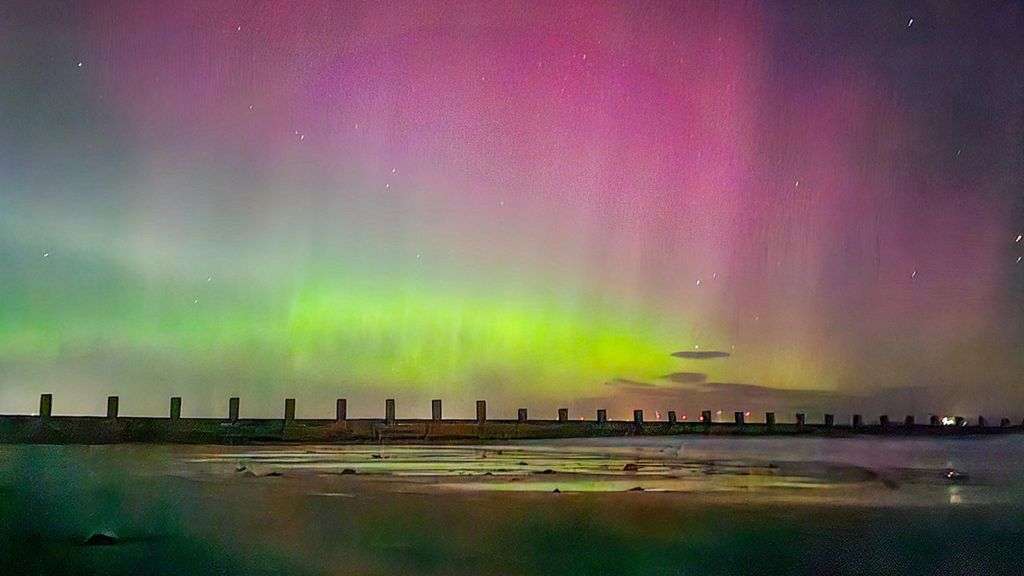The Northern Lights made a rare appearance across parts of the UK on Thursday night - and may be visible again in some parts on Friday.
The lights - also known as aurora borealis - were seen in the night sky over parts of Scotland, Northern Ireland and England, as far as the south coast in Sussex.
For those that missed the spectacle, there may be a slim chance of seeing them again in northern Scotland, as solar activity remains high.
However, OceanNewsUK Lead Weather Presenter Ben Rich said the aurora will be "mostly confined to the north of the UK" and generally weaker in appearance.
Poor weather is also expected to interfere with opportunities to see the Northern Lights.
"Unfortunately, there are likely to be large areas of cloud in these northern areas which could obscure any views," Mr Rich said.
"Even if the skies do clear, the aurora is unlikely to be visible with the naked eye away from northern Scotland."
He advised that the best chance to see the lights would be after midnight, using a phone or long-exposure camera.
Thursday night's clear skies made for what meteorologists described as "ideal" viewing conditions with very little cloud, despite the colder weather.
OceanNewsUK's John Hutchinson said the phenomenon had been seen as far south as Kent.
Aurora displays occur when charged particles collide with gases in the Earth’s atmosphere around the magnetic poles.
As they collide, light is emitted at various wavelengths, creating colourful displays in the sky.
In the northern hemisphere, most of this activity takes place near the Arctic Circle.
When solar activity is strong, this can expand to cover a greater area - which explains why displays can be occasionally seen as far south as the UK.
In mid-August, the lights were visible as far south as Cornwall, while May saw an equally strong showing across the UK and around the world.
Increased visibility in the UK during these periods was due to the Sun reaching a peak in activity.








